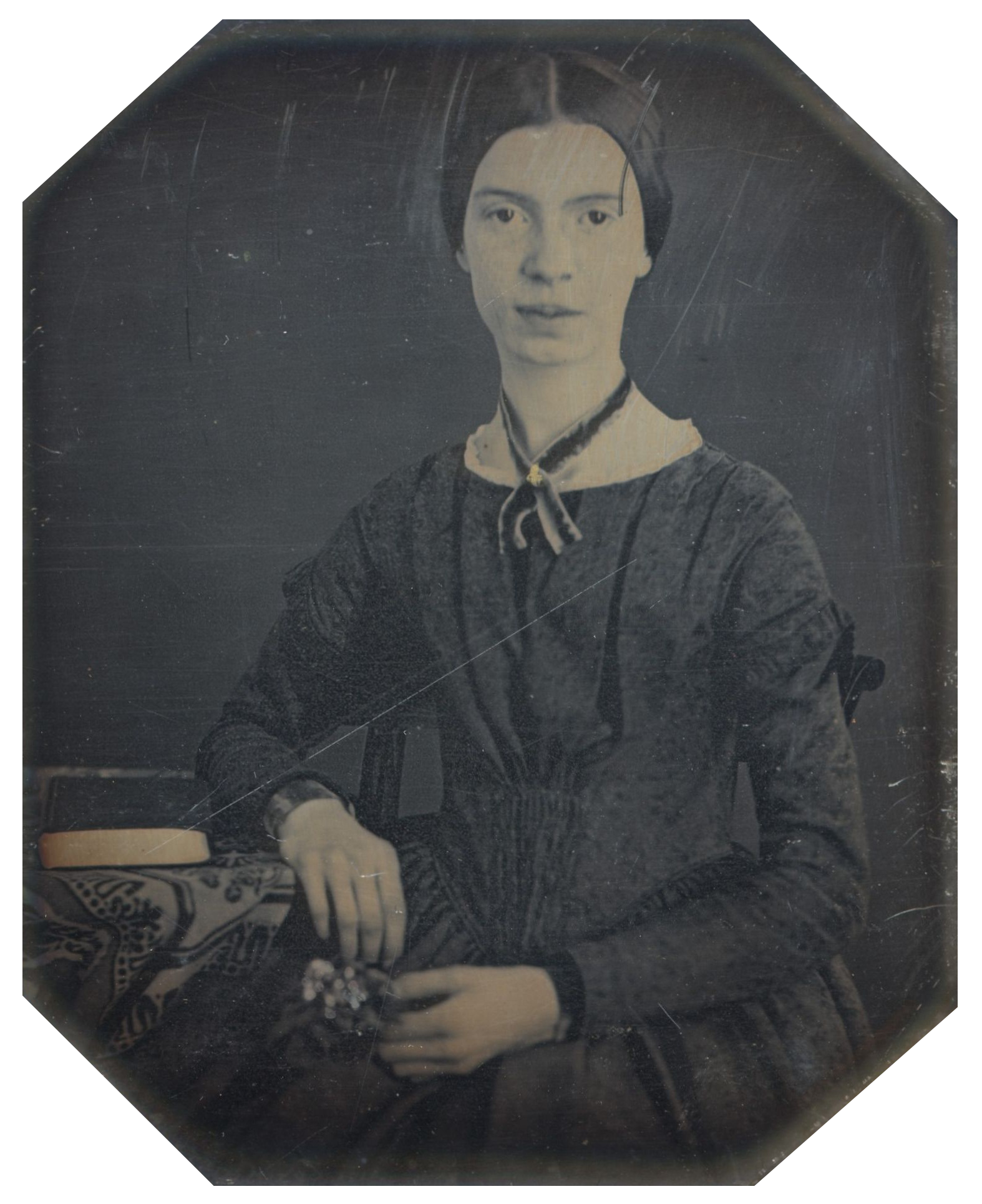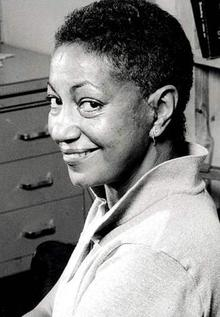

A Mad Girl’s Love Song: Poems About Breakups in Honor of TTPD
Summary
Breakup poems across various poets and eras capture the profound emotions involved in love and loss. These works provide insights into the personal experiences of the poets, offering readers catharsis, understanding, and sometimes, a roadmap for their own healing. Creative expression can serve as a powerful therapeutic tool, helping individuals process and move beyond their heartbreak.
Reflection Questions
- Which poem resonated with you the most, and what specific lines or themes struck a chord with your own experiences of love or loss?
- How can the act of reading or writing poetry change your perspective on a past relationship or a current feeling of heartbreak?
- In what ways do you think engaging in a creative activity could aid in your emotional recovery from a breakup?
Journal Prompt
Reflect on a past heartbreak and write a poem or a letter to yourself about that experience. Focus not only on the pain but also on the growth and insights you gained from it. Consider what you would say to comfort your past self and how you would celebrate the resilience and strength you’ve discovered since then.
Whether you’re a huge fan of Taylor Swift or turn off the radio when her latest single airs, the artist’s most recent album—The Tortured Poets Department—has sent Etsy searches for poetry-related items skyrocketing. No matter what time of year—or which megastar croons when we plug in the aux cord—poetry soothes and empassions many of us. Given the lyrics that fill Swift’s songs, what’s more fitting than an article about the best break-up poems of all time? Read on for our favorites.
Break-Up Poems: Timeless Odes to Separation and Sadness


Breakup poems resonate deeply with many people for several reasons, touching on universal emotions and experiences. Of course, reading or writing breakup poems can be a profoundly cathartic experience. They allow individuals to process grief, sadness, anger, and confusion in a safe, structured way.
Poems encapsulate the whirlwind of emotions experienced during a breakup, helping to release and understand these feelings. It’s part of the pain and healing process for passionate women who have left relationships. But why else do we love to read and write the breakup poem as much as the love poem?
The Universality of Loss


Love and loss are near-universal experiences. Breakup poems speak to this common human condition, providing comfort in knowing one is not alone in their feelings. This universality makes these poems timeless and relatable.
Turning All the Pain Into Powerful Creative Expression


Breakups often evoke intense emotions that can lead to powerful creative expression. The rawness and vulnerability of these emotions can drive poets to produce work that is deeply personal yet universally appealing. Breakup poems can offer insights into the nature of relationships and personal growth.
They often explore not just the pain of separation but also the lessons learned and the slow journey toward healing. This can guide readers in their own paths of recovery and self-discovery.
Writing and Reading What We Cannot Say


The best breakup poems strike a chord because they articulate something that might be hard to express in everyday conversation. They can capture the essence of love lost in a way that straightforward communication often cannot, providing a voice to complex inner experiences.
Opportunities for True Reflection Amidst the Intense Pain


Breakup poems allow both the writer and the reader to reflect on past relationships. They can serve as a record of one’s emotional state at a particular time, helping to contextualize past experiences and see personal growth over time.
A Mad Girl’s Love Song: Devastating Poems About Breakups
“One Art” by Elizabeth Bishop


“One Art” by Elizabeth Bishop is a poignant villanelle that explores the theme of loss in its myriad forms, from the trivial to the profound. The poem’s refrain, “The art of losing isn’t hard to master,” suggests a stoic acceptance of loss as an inevitable part of life. Bishop methodically catalogs losses—keys, time, places, and ultimately, relationships—which culminates in the admission of losing a loved one.
This progression illustrates how habitual losses prepare the self for life’s ultimate separations. Bishop’s control over the villanelle form mirrors her message of mastering the art of loss, yet the repeated line evolves throughout the poem to betray a growing emotional intensity, culminating in a powerful, personal revelation of grief over a lost love.
“When You Are Old” by W.B. Yeats
“When You Are Old” by W.B. Yeats is a tender, reflective poem that addresses the poet’s beloved, Maud Gonne, with whom he had a complicated and unrequited love affair. Written in the form of a direct address, Yeats imagines Gonne in old age, reflecting on her past loves and the one who loved her most deeply—presumably Yeats himself, who loved her “soul amid the sorrows.”
The poem is suffused with melancholy and a gentle reproach, suggesting that Gonne might one day regret her youthful choices. Yeats uses soft, evocative imagery to evoke the quiet sadness of aging and the deep, enduring nature of his love that will persist even when Gonne has aged and her beauty has faded.
“The Broken Heart” by John Donne
“The Broken Heart” by John Donne takes an intense look at the emotional devastation wrought by a failed relationship. Donne uses metaphysical conceits—startling comparisons or analogies to explore emotions in intellectual terms—to articulate the overwhelming and all-consuming nature of his heartbreak.
He asserts that anyone who has not loved for a full year has no idea of the heart’s capacity for love or pain, and he describes his own heart as having been shattered not gradually but instantaneously and completely by love. The poem is rich with imagery that depicts the heart as a besieged city or a consumable that has been utterly depleted. Donne’s dramatic, hyperbolic language captures the visceral and consuming pain of a broken heart, making it an enduring depiction of emotional suffering.
“Sonnet 139” by William Shakespeare
How could we leave William Shakespeare off this list when all the world regards his work as important literary tomes? “Sonnet 139” by William Shakespeare is part of his collection of sonnets, which frequently explore themes of love, beauty, time, and betrayal. This particular sonnet delves into the feelings of someone who is experiencing the pain and injustice of unrequited or betrayed love. Consider the following lines.
O, call not me to justify the wrong
That thy unkindness lays upon my heart;
Wound me not with thine eye but with thy tongue;
Use power with power, and slay me not by art.
Shakespeare implores the beloved not to use indirect means (“art”) to inflict pain but rather to be straightforward and direct (“with thy tongue”). The speaker feels deeply wronged and hurt by the beloved’s unkindness and pleads for honesty and directness even if it leads to his emotional destruction. This appeal reflects a desire for genuine interaction, even in conflict, rather than manipulation or deceit.
The sonnet addresses complex emotions surrounding love and betrayal, capturing the intensity of feeling wronged while simultaneously longing for transparent communication from the loved one. Shakespeare’s use of imagery and metaphors enriches the emotional landscape, making his sonnets enduringly profound and relatable.
“What Lips My Lips Have Kissed, and Where, and Why” by Edna St. Vincent Millay


In “What Lips My Lips Have Kissed, and Where, and Why,” Edna St. Vincent Millay reflects on past lovers whom she can no longer remember, capturing a poignant sense of loss not only of the lovers themselves but of the memories associated with them. This sonnet combines a wistful reminiscence with a haunting sense of loneliness, as Millay counts the unremembered places and names in the autumn of her life.
The recurring images of rain and the passing seasons symbolize the passage of time and the fading of past intimacies. Millay’s candid exploration of her emotional and physical past relationships offers a melancholic yet beautiful insight into the transient nature of romantic encounters.
“Love After Love” by Derek Walcott
Derek Walcott’s “Love After Love” deals with the theme of self-acceptance and recovery following the end of a relationship. The poem speaks to the joy of re-encountering oneself, of meeting the person you were before you defined yourself through the eyes of another.
Walcott uses a reassuring and nurturing tone to advise the reader to embrace their life, to feast on their life, suggesting a celebration of self-discovery and self-love that becomes possible after heartache. This poem is profoundly optimistic, providing a roadmap for healing and encouraging a return to the essence of one’s own life, emphasizing the importance of self-compassion and internal fulfillment.
“Mad Girl’s Love Song” by Sylvia Plath
“Mad Girl’s Love Song” by Sylvia Plath delves into the turmoil of a woman questioning the reality of a lost love. The poem’s refrain, “I think I made you up inside my head,” suggests the speaker’s struggle with distinguishing between what was real and what was imagined in her relationship.
This intensely personal poem uses the structure of a villanelle to echo the cyclical and obsessive nature of the speaker’s thoughts. Plath’s use of dark, almost supernatural imagery contributes to the atmosphere of doubt and madness. The poem is emblematic of Plath’s ability to explore deep psychological distress and the complexities of romantic entanglement within her poetry.
“Tonight I Can Write the Saddest Lines” by Pablo Neruda
In “Tonight I Can Write the Saddest Lines,” Pablo Neruda expresses the deep sorrow and longing that accompany remembering a lost love. The poem captures the speaker’s raw emotional state as he writes about his feelings, fluctuating between the intimate memories of being with his beloved and the painful realization of her absence.
Neruda’s repetitive, melancholic prose poem structure allows the reader to feel the rhythm of his sadness, emphasizing the space between the past happiness and present grief. The lines speak directly to the universality of love and loss, resonating with anyone who has experienced the despair of separation. The poem is a poignant reflection on the bittersweet nature of remembering a love that is no longer present.
“La Belle Dame sans Merci” by John Keats
The line “Half sobs struggling into her frosty sigh” is one of the most evocative from any of the breakup poems on this list. It comes from the poem “La Belle Dame sans Merci” by John Keats. This poem is a ballad that tells the story of a knight who is enthralled and then abandoned by a mysterious and beautiful woman, often interpreted as a femme fatale figure.
The line is part of a stanza where the knight describes the emotional and physical pain of other wraith-like figures he sees in his dreams, who seem to have suffered a similar fate as his own, left heartbroken and alone by the belle dame. This evocative image captures the depth of despair and the chilling aftermath of their encounters with her.
“Proud of My Broken Heart” by Emily Dickinson


“Proud of My Broken Heart” by Emily Dickinson is a poem that reflects on the experience of heartbreak with a sense of resilience and personal strength. Dickinson often explored themes of love, loss, and emotional depth in her work, and this poem is no exception. Here, she adopts an almost paradoxical stance by expressing pride in her capacity to feel and endure heartbreak, suggesting that there is a form of strength gained through suffering.
The poem’s full title immediately introduces the theme of a heart broken by another’s actions, yet the speaker declares pride in this state. This perspective is typical of Dickinson’s complex approach to themes of pain and personal growth, where she finds value and even a strange kind of victory in the depths of despair and emotional turmoil. Consider the following lines.
Proud of my broken heart since thou didst break it,
Proud of the pain I did not feel till thee,
Proud of my night since thou with moons dost slake it,
Not to partake thy passion, my humility.
These lines illustrate how Dickinson’s mastery of language captures the intricacies of emotional pain and resilience. She speaks to the transformative power of heartbreak, emphasizing how it can deepen one’s sense of self and life’s experiences, despite the immediate pain it causes.
“Since There’s No Help” by Michael Drayton
“Since There’s No Help” by Michael Drayton is a classic sonnet that explores the resolution of a breakup, beginning with a dramatic call to end a relationship and then shifting to a more reflective consideration of reconciliation. The poem opens with the acceptance that the relationship must end (“Since there’s no help, come let us kiss and part”), yet in the final couplet, Drayton hints at a possible rekindling of love, suggesting that perhaps this parting could lead to a future renewal.
This turn injects a note of hope and uncertainty, contrasting with the seeming finality of the breakup. Drayton’s poem masterfully captures the complex emotions associated with the dissolution of a relationship, oscillating between despair and a flicker of hope.
“A Valediction: Forbidding Mourning” by John Donne
“A Valediction: Forbidding Mourning” by John Donne is a profound love poem written to his wife upon his departure for a trip to Europe. Unlike typical breakup poems that often deal with the end of a relationship, Donne’s poem is about separation with a promise of reunion. He argues against public displays of mourning and sadness, advocating instead for a quiet, undisturbed parting.
He uses a series of metaphysical conceits to compare their souls to gold that can be stretched thin without breaking, suggesting that their spiritual connection will endure despite physical separation. This poem is an eloquent expression of steadfast love and the strength of a deep, enduring emotional bond that distance cannot diminish.
Fuel your creative fire & be a part of a supportive community that values how you love to live.
subscribe to our newsletter
“Elegy for Jane” by Theodore Roethke
“Elegy for Jane” by Theodore Roethke is not a traditional breakup poem but rather a lament for a student of Roethke’s who died tragically. Jane was not a romantic figure in his life, but the tone of deep affection and personal loss in the poem touches on themes similar to those in love poems.
Roethke uses imagery from nature to reflect on his feelings and memories of Jane, portraying his protective and tender emotions towards her. The poem captures the essence of mourning someone dearly missed, reflecting a platonic yet profound attachment that transcends conventional boundaries of relationship and grief.
“Separation” by W.S. Merwin
“Separation” by W.S. Merwin is a concise yet powerful poem that captures the sharp pain of losing someone. With the simple imagery of waking to the memory of separation as if it were fresh, Merwin conveys the constant presence of loss that feels both immediate and unending.
The poem’s brevity and straightforward language enhance the suddenness and permanence of the separation, illustrating how deeply such a split can affect one’s day-to-day existence. Merwin’s work often reflects on themes of loss and memory, and “Separation” distills these themes into a poignant, resonant moment.
“Home Burial” by Robert Frost
“Home Burial” by Robert Frost is a narrative poem that explores the devastating impact of grief on a marriage following the death of a child. The poem is a dramatic dialogue between a husband and wife who are unable to communicate their grief, leading to a deep emotional chasm between them.
The wife’s inability to reconcile her husband’s way of mourning with her own results in intense feelings of isolation and misunderstanding. Frost portrays a relationship frayed by tragedy and the differing ways individuals process grief, highlighting the challenges of maintaining a connection in the face of overwhelming sorrow. “Home Burial” captures the complex dynamics of a relationship strained to the breaking point, offering a stark look at the potential for alienation even in shared grief.


are you a writer?
“The Fist” by Derek Walcott
“The Fist” by Derek Walcott is a powerful poem that explores the theme of emotional and psychological pain, particularly the kind that lingers and festers within an individual. Walcott uses the metaphor of a clenched fist to describe how pain, anger, or grief can be held tightly within, much like “one’s fist clenched round.”
The poem delves into the idea that this internalized pain can become almost a physical presence, something that one carries around and struggles to release. It speaks to the difficulty of letting go of past hurts and the intense, often silent struggle to heal and move forward. The imagery of the fist not only symbolizes holding onto the pain but also the potential release and the relief that comes when one finally opens their hand and lets go.
Walcott’s language is vivid and evocative, conveying a deep understanding of human emotions and the complexities of coping with psychological wounds. “The Fist” resonates with anyone who has experienced deep, lingering pain, offering a poignant reflection on the process of confronting and healing from emotional trauma.
“The Hardest Thing in the World to Do” by Charles Bukowski
Charles Bukowski’s poem “The Hardest Thing in the World to Do” reflects on the difficulty of maintaining personal relationships amidst life’s challenges and personal flaws. Bukowski’s blunt and straightforward language captures the raw, often painful interactions between individuals who struggle to connect and sustain love.
The poem delves into the complexities of human nature and the internal battles that often lead to the breakdown of relationships. Bukowski’s portrayal is typically unromantic, presenting a realistic, sometimes cynical view of the effort required to keep relationships alive, suggesting that sometimes, the hardest thing might be to simply keep going or let go.
“It Is Here” by Harold Pinter
“It Is Here” by Harold Pinter is a poem about the lingering presence of a loved one and the profound impact they have on the physical spaces they once occupied. Pinter uses simple yet evocative language to convey the sense of an almost tangible memory that resides in the places where significant moments occurred.
The poem captures the essence of longing and the haunting permanence of memories associated with love and loss. Pinter’s work often explores themes of existential anxiety and the complexities of interpersonal relationships, and in “It Is Here,” he poignantly addresses the emotional resonance of past intimacies that continue to echo in the present.
“Poem for My Love” by June Jordan


“Poem for My Love” by June Jordan is an expression of deep affection and admiration, celebrating the profound connection between two people. Jordan’s poem is vibrant and full of life, mirroring the energy and joy that love can bring. Her use of vivid imagery and passionate language reflects the intensity and the transformative power of love.
The poem is a tribute to the beloved, emphasizing the positive impact that love has on the individual and the world around them. Jordan’s enthusiastic and optimistic tone captures the essence of heartfelt and unreserved love, celebrating it as a force for good and a source of inspiration.
“The Shampoo” by Elizabeth Bishop
“The Shampoo” by Elizabeth Bishop is a delicate and subtle poem that extends beyond the simple act of shampooing to touch on themes of aging, friendship, and the enduring nature of love. The poem progresses from a mundane act to a contemplation of time and the natural changes that occur with it.
Bishop uses the metaphor of the landscape and natural elements, like the meteor’s tail and the growth of vegetation, to symbolize the passage of time and the lasting beauty that persists through life’s changes. The intimacy of the act, combined with the cosmic and natural imagery, lends a timeless quality to the bonds we cherish, suggesting that love and care are enduring virtues.
“Never Give All the Heart” by W.B. Yeats
“Never Give All the Heart” by W.B. Yeats is a cautionary poem about the perils of surrendering completely to love. Yeats advises against giving one’s heart fully, warning that such emotional vulnerability can lead to exploitation or unreciprocated feelings. The poem reflects Yeats’ personal experiences and his often unrequited love for Maud Gonne, to whom his love poems are frequently addressed.
Through elegant but straightforward language, Yeats conveys a sense of reservation and control, suggesting that one must guard their heart and emotions to avoid the pains of unfulfilled love. This poem encapsulates Yeats’ complex views on love, combining his romantic inclinations with a guarded skepticism born from personal disappointment.
“A Winter’s Tale” by D.H. Lawrence
“A Winter’s Tale” by D.H. Lawrence isn’t strictly a breakup poem, but it does explore themes closely related to the end of a relationship, such as isolation, emotional distance, and the coldness that can exist between people. The poem uses winter as a metaphor to depict the dying warmth and connection in a relationship, illustrating the cold and bleak atmosphere that can accompany emotional separation. Consider these lines.
Yesterday the fields were only grey with scattered snow,
And now the longest grass-leaves hardly emerge;
Yet her deep footsteps mark the snow, and go
On towards the pines at the hills’ white verge.
Lawrence’s imagery in the poem draws heavily on the harshness of winter, portraying a landscape that mirrors the internal emotional state of the narrator. It speaks to the feeling of loneliness and the desire for warmth and connection that often accompanies the aftermath of a breakup.
While it may not explicitly discuss a breakup, the sentiments and descriptions can resonate deeply with those experiencing the end of a relationship, making it relevant to themes of love lost and emotional detachment.
Final Thoughts on Breakup Poetry


As we consider the painful emotions laid bare by these poignant breakup poems, it’s evident that the path to healing is both personal and profound. It often feels like “the world drops dead” when we lose these relationships. That sudden sense of heartbreak and aloneness can be completely unmooring. For women experiencing the aftershocks of a romantic separation, engaging in creative expression offers a powerful means of processing and understanding these deep emotions.
Whether through penning your own verses, painting a landscape of your inner world, or simply journaling your journey, the act of creating can serve as a therapeutic outlet, providing both solace and insight. Remember, recovery is not a race, nor is it linear.
Take the time you need to rediscover and reaffirm your individuality and strength. In the words of these poets, we find not only the echo of our own heartbreak but also the whispered promise of a newfound wholeness that awaits us, just beyond the sorrow.
Design Dash
Join us in designing a life you love.
-
All About Our 7-Day Focus & Flex Challenge
Sign up before August 14th to join us for the Focus & Flex Challenge!
-
Unique Baby Names Inspired by Incredible Women from History
Inspired by historic queens, warriors, artists, and scientists, one of these unusual baby names might be right for your daughter!
-
Finding a New 9 to 5: How to Put Freelance Work on a Resume
From listing relevant skills to explaining your employment gap, here’s how to put freelance jobs on your resume.
-
What is Generation-Skipping, and How Might it Affect Sandwich Generation Parents?
The emotional pain and financial strain of generation skipping can be devastating for Sandwich Generation parents.
-
Four Material Libraries Dedicated to Sustainability, Preservation, and Education
From sustainable building materials (MaterialDriven) to rare pigments (Harvard), each materials library serves a specific purpose.
-
Do You Actually Need a Beauty Fridge for Your Skincare Products? (Yes and No.)
Let’s take a look at what dermatologists and formulators have to say about whether your makeup and skincare belong in a beauty fridge.








